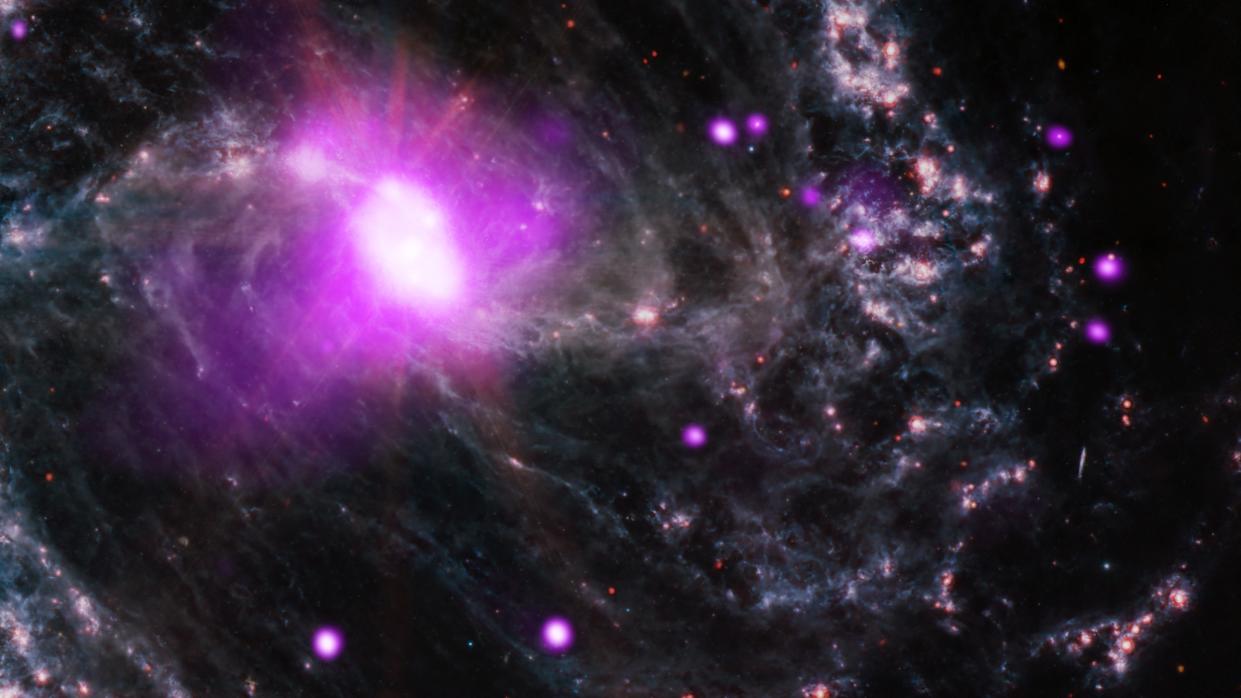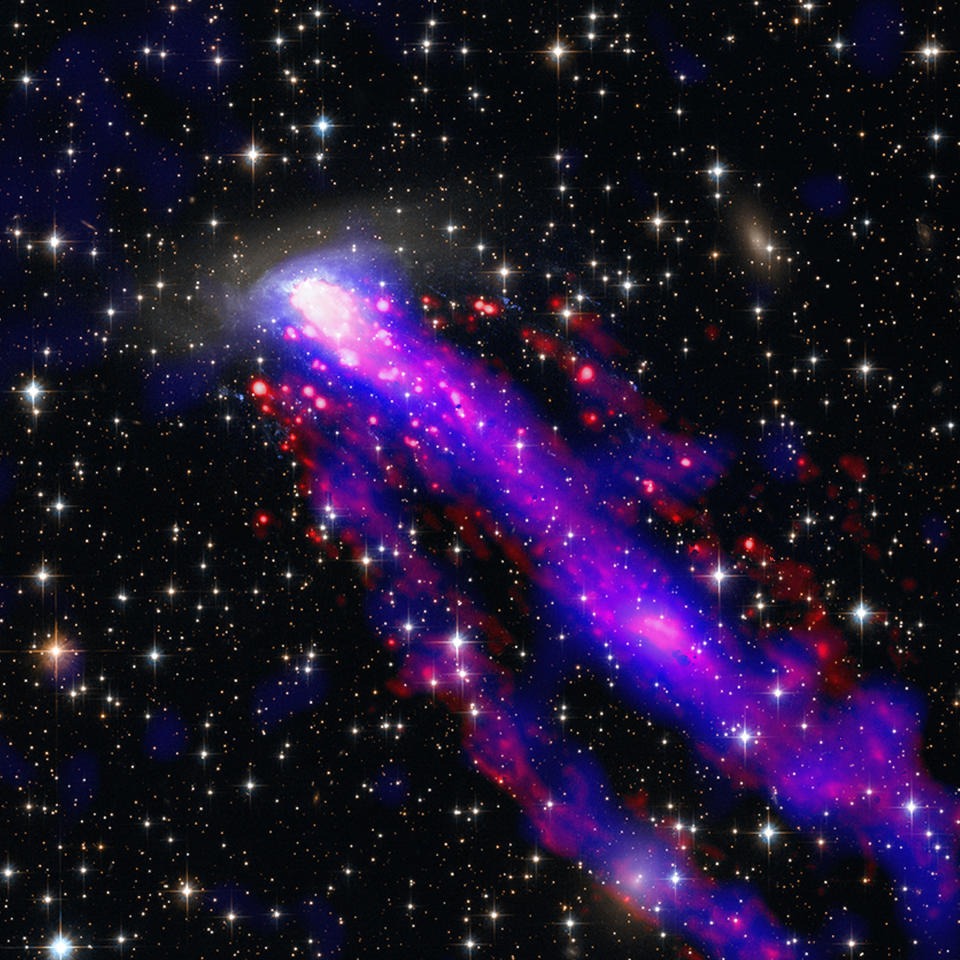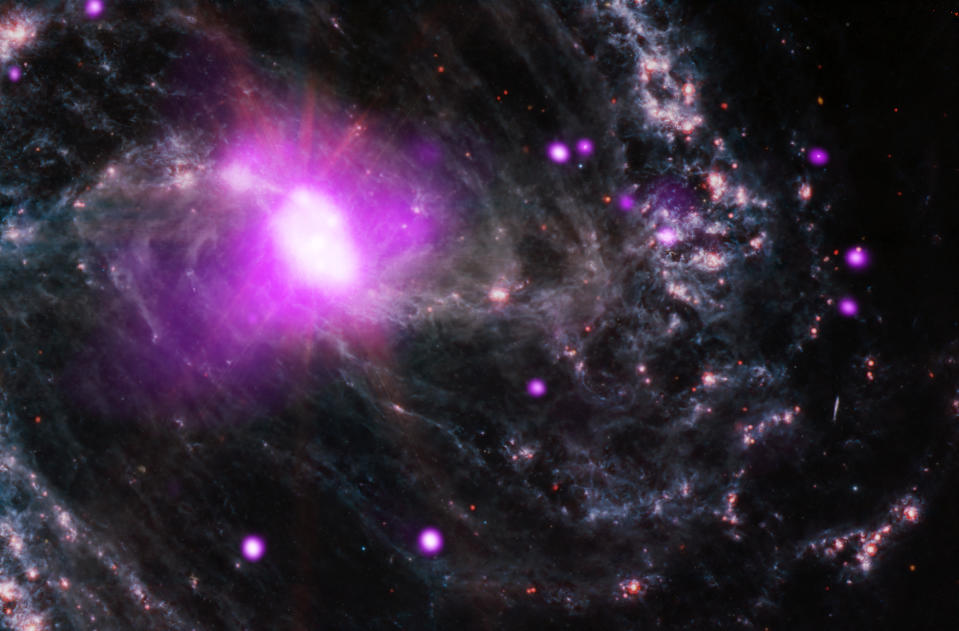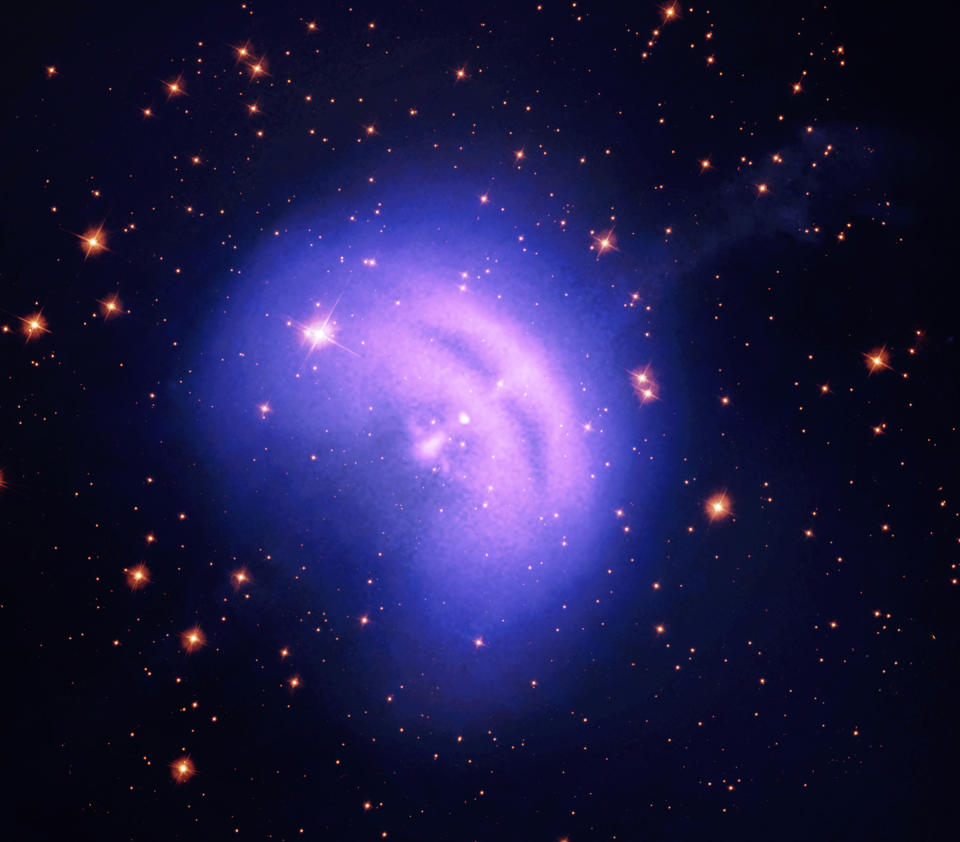Powerful observatories reveal 5 breathtaking corners of the universe hidden to human eyes (images)

Even if you were to theoretically travel to the darkest desert on Earth, wait until after sundown and peer up at the night sky, you wouldn't be able to see every star there is to see.
There'd be countless more scattered across the universe, hidden not just by distance but also because your eyes aren't built to perceive the signals they emit — unseeable signals like infrared light, radio waves and X-ray emissions. In fact, humans can only see a tiny fraction of the electromagnetic spectrum. It's a sliver known as the "visible light region."
But as Stephen Hawking once said, we brilliantly step past these limitations with "our minds and our machines" — and once again, our species has managed to live up to that phrase.
On Thursday (Sept. 14), scientists presented five new deep-space images captured in a variety of invisible-to-human wavelengths. It's a stunning collection of visuals that reveal some absolutely riveting corners of the cosmos. Each portrait is constructed with data collected by powerful telescopes, including NASA's Chandra X-ray Observatory, the now-retired Spitzer Space Telescope, the iconic James Webb Space Telescope and the Very Large Telescope (to name just some).
Basically, these instruments are able to capture outflows of non-visible light radiation emanating from distant regions of space in such a way that scientists can take that information, overlay as necessary and turn it into images we can admire.
Now that we know what we're looking at, let's go through the lot.
The first image NASA highlights in a statement about the five pieces is titled the "Galactic Center." Sitting about 26,000 light-years from Earth, this is literally the center of the Milky Way galaxy that we live in. It contains a supermassive black hole, superheated clouds of gas, neutron stars (which are stellar beings so dense a tablespoon of one would equal something like the weight of Mount Everest) and other trippy things.
The reason it looks kind of blobby instead of swirly like you might imagine a galactic center to look is due to the fact that we are looking at it from within the galaxy. This internal perspective is actually one reason scientists with the Event Horizon Telescope Collaboration selected M87*, the black hole in one of our neighboring galaxies, as the subject of humanity's first black hole image instead of Sgr A*, the one in the center of the Milky Way. It was easier to inspect the center of a galaxy that we can see panoramically. (The EHT team did eventually manage to get an image of Sgr A*. That was humanity's second black hole image).
In this view of the Milky Way's core, Chandra data leads the charge, its observations seen in orange, green, blue and purple.

NASA then moves on to Kepler's Supernova Remnant, which the agency says represents the remains of a white dwarf that exploded after undergoing a thermonuclear explosion.
White dwarfs are the dying cores of stars that once thrived and shined the way our sun currently does. Someday, our sun will become a white dwarf as well.
In this image, Chandra data is seen in blue and shows a "powerful blast wave that ripped through space after the detonation," NASA explains, while infrared data from Spitzer is seen in red, and optical light from the Hubble Space Telescope is seen in cyan and yellow. The latter two show debris of the destroyed star.
To be clear, all the colors mentioned may not be easily discernible because of how scientists overlay certain bits of information. For instance, if you overlay yellow data with red data, you'd see more of an orange hue. If you'd like to see all the colors individually, however, here's a page on Chandra's website that shows you non-overlain images of the discussed portraits as well.


Next up, we have ESO 137-001, a galaxy that's moving through space at 1.5 million mph (2.4 million kph) while leaving two tails behind that are made of superheated gas.
Chandra observations capture this gas in blue, the VLT indicates hydrogen present in red and Hubble's optical and infrared data is shown in orange and cyan. (Yes, Hubble can collect infrared light like the James Webb Space Telescope, but the JWST is far better at it).

Keeping with the theme of galaxies, NASA then highlights the spiral galaxy NGC 1365 in a rather ghostly scene. This realm, according to the statement, contains a supermassive black hole that's being fed a steady stream of material.
Chandra observations, shown in purple to create that Barbie-esque glow, reveal some of that material yet to enter the void. The JWST's impressive infrared sensors had a hand in this visual as well, offering red, green and blue accents that are pretty difficult to see in this version.

For the final of the so-called "Fab Five" images, scientists offer a dreamy view of the aftermath of a collapsed star. This is the Vela Pulsar, spied by NASA's Imaging X-ray Polarimetry Explorer (IXPE), Chandra and Hubble. These instruments' data are distributed in the light blue, purple and yellow, respectively.

But despite the "Fab Five" title, it's worth noting that these images may as well be collectively called the "Fab Million." That does sound a bit weird, but what I mean to say is it's really hard not to focus on the absolute wealth of stars, galaxies and who knows what else that's present in the background of these photos.
Every single one of those sparkles represents a cosmic marvel just as beautiful as the one we're seeing up close — in the way that every image we take of someone in public tends to have people in the background with lives as rich as our subject's.
Day by day, each of those sparkles seems to be coming to the forefront, thanks to our minds and our machines.

